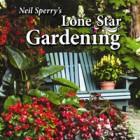Gardening in the Shade
Summers in Texas are hot! We all welcome the benefits of a tree shading our house, but that same shade can pose a challenge in creating the gardens of our dreams.
Generally speaking, there are fewer choices of plants that can provide colorful flower displays in shade, but even with these limitations, there is still a plethora of Texas native plants that will help you create a garden oasis.
When planning your shade garden, begin by understanding the shades of meaning with the word “shade.” Here are some common terms and general definitions describing various light situations:
Deep shade – no direct light falls on the area, reflected light only
Full shade – some, but very little direct sunlight filters through
Dappled or filtered light – areas receive considerable light as it filters through the leaves of trees or a built structure such as an arbor
Part sun – mostly shade throughout the day with periods of sun here and there
Part shade – mostly sun with periods of shade
Full sun – no shade falls on the area between sun up and sun down
As you plan your garden, be aware not only of how the light falls during the course of any given day, but also how it changes throughout the year. Northern exposures become very dark in winter, whereas they may be quite bright in the summer when the sun is higher in the sky. A winter garden may have less light due to the lower angle of the sun. Other areas may receive much more light in winter if they are under deciduous trees. Pecan trees leaf out relatively late, and can let plenty of light through for early spring bloomers, such as golden groundsel or baby blue-eyes.
Morning sun is ideal for many plants. The light is strong, but temperatures are still relatively mild. It is the robust plant that prefers full sun all day, and, of course, many of our native species are appropriately adapted.
Some of the most difficult conditions for which to find the right plants are at the edge of woods or partially under a tree, particularly areas that receive morning shade followed by blasting afternoon sun. Versatile plants that grow in full shade as well as full sun are best bets. Below is a list of Texas natives that can handle such conditions.
Edge Plants:
Turk’s cap (Malvaviscus arboreus var. drummondii)
Texas lantana (Lantana urticoides)
Rock rose (Pavonia lasiopetala)
Velvet mallow (Allowissadula holosericea)
Zexmenia (Wedelia texana)
Chile pequin (Capsicum annuum)
Shrubby boneset (Ageratina havanensis)
Standing winecup (Callirhoe pedata)
Red and blue colored flowers are more difficult to see in the shade from a distance than lighter colored ones. Plant them where they may be observed up close or in a large mass to make a greater impact. Use silver foliage or white, yellow, light blue or pink flowers where darker colors would be harder to see. For the most interesting plant combinations, include species that have contrasting foliage colors or textures as well as those with colorful flowers. In addition to those listed above, here are a few more to consider:
Interesting Plants for Shade:
Golden groundsel (Packera obovata) (flowers)
Heart-leaf skullcap (Scutellaria ovata) (flowers and foliage)
Columbine (Aquilegia canadensis or other Aquilegia species) (flowers and foliage)
Giant spiderwort (Tradescantia gigantea) (flowers)
Baby blue-eyes (Nemophila phacelioides) (flowers and foliage)
Dwarf palmetto (Sabal minor) (foliage)
River fern (Thelypteris kunthii) (foliage)
Pigeonberry (Rivina humilis) (foliage)
Scarlet sage (Salvia coccinea) (flowers)
Twist-leaf yucca (Yucca rupicola) (flowers and foliage)
About the author: Andrea DeLong-Amaya is Director of Gardens and Growing at Lady Bird Johnson Wildflower Center in Austin.
For more information about these and other plants, including light requirements and species appropriate for your area of the state, visit the Lady Bird Johnson Wildflower Center Web site at www.wildflower.org.

